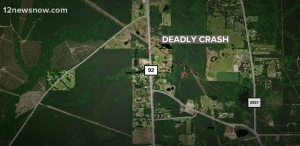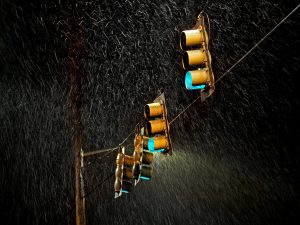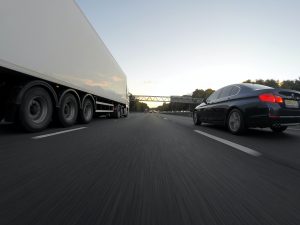 Whether you’re sending your children to college for the first time as a parent or you’ve had an empty nest for a while, the start of an undergraduate career is often every bit as exciting as it is nerve-wracking. On the one hand, you’re proud of your kids for making it this far, but also nervous about what it’ll mean for them being on their own for the first time. However, no one ever expects to get bad news and hear that their children were involved in a major accident while away from home. When these incidents occur, those responsible can be held accountable through a Texas wrongful death or personal injury lawsuit.
Whether you’re sending your children to college for the first time as a parent or you’ve had an empty nest for a while, the start of an undergraduate career is often every bit as exciting as it is nerve-wracking. On the one hand, you’re proud of your kids for making it this far, but also nervous about what it’ll mean for them being on their own for the first time. However, no one ever expects to get bad news and hear that their children were involved in a major accident while away from home. When these incidents occur, those responsible can be held accountable through a Texas wrongful death or personal injury lawsuit.
According to a recent news report, two Dallas Baptist University students were killed in a deadly car crash. Both students had only just arrived on campus for their freshman year and were passengers in a friend’s car when the at-fault party crashed into their vehicle. Authorities reported that three other students were also involved in the accident and are recovering from non-life-threatening injuries. Currently, the investigation is still ongoing, and it is unclear if the responsible driver will be facing charges or if drugs or alcohol played a role in the accident.
In Texas, following an accident like this one, there are several legal actions you can take. Perhaps the most common is assessing whether you have a wrongful death claim. When a person passes away because of another person’s wrongful actions, you may have grounds for a claim. More specifically, in Texas, the death must have come about due to a “wrongful act, neglect, carelessness, unskillfulness, or default.”
 Texas Injury Lawyers Blog
Texas Injury Lawyers Blog









 With thousands of miles of beautiful natural sights surrounding Texas’s open roads, it’s no surprise that motorcycles are so popular in the state. Motorcycles, however, can often pose a number of unique risks on the road. Drivers of passenger vehicles can often have trouble seeing motorcycles because of their smaller size, or they can easily get caught in a vehicle’s blind spot. Thus, before anyone decides to purchase a motorcycle, they must understand the risks involved. In many Texas motorcycle accidents, the cause of the collision is entirely beyond the motorcyclist’s control.
With thousands of miles of beautiful natural sights surrounding Texas’s open roads, it’s no surprise that motorcycles are so popular in the state. Motorcycles, however, can often pose a number of unique risks on the road. Drivers of passenger vehicles can often have trouble seeing motorcycles because of their smaller size, or they can easily get caught in a vehicle’s blind spot. Thus, before anyone decides to purchase a motorcycle, they must understand the risks involved. In many Texas motorcycle accidents, the cause of the collision is entirely beyond the motorcyclist’s control. Many Texans spend the majority of their time at work. As a result, San Antonio
Many Texans spend the majority of their time at work. As a result, San Antonio  Because of social distancing requirements in the wake of COVID-19, people in Texas are taking advantage of shopping from the comfort and safety of their own homes. In addition, the ease and availability of all kinds of products through online retailers has made it possible to purchase everything from your family’s weekly grocery haul to the newest gadget. But when that package arrives on your doorstep, is the item you have received safe? Outside of the convenience factor of the shopping experience, can we trust online retailers and their products? If you are a Texan who has purchased a faulty product from an online retailer that has become a hazard or dangerous, you may be eligible to receive compensation through a product liability claim.
Because of social distancing requirements in the wake of COVID-19, people in Texas are taking advantage of shopping from the comfort and safety of their own homes. In addition, the ease and availability of all kinds of products through online retailers has made it possible to purchase everything from your family’s weekly grocery haul to the newest gadget. But when that package arrives on your doorstep, is the item you have received safe? Outside of the convenience factor of the shopping experience, can we trust online retailers and their products? If you are a Texan who has purchased a faulty product from an online retailer that has become a hazard or dangerous, you may be eligible to receive compensation through a product liability claim. Many people prefer motorcycles to cars because of the freedom associated with whizzing down the road. In addition to making your daily commute potentially easier and more fun, motorcycles can also offer an increased sense of mobility. However, a certain degree of risk comes with operating a motorcycle – without the steel exterior of a car to protect you on the road, you may be more at risk in the event of a serious accident. When an accident happens unexpectedly, especially if you are riding a motorcycle, the consequences may be drastic.
Many people prefer motorcycles to cars because of the freedom associated with whizzing down the road. In addition to making your daily commute potentially easier and more fun, motorcycles can also offer an increased sense of mobility. However, a certain degree of risk comes with operating a motorcycle – without the steel exterior of a car to protect you on the road, you may be more at risk in the event of a serious accident. When an accident happens unexpectedly, especially if you are riding a motorcycle, the consequences may be drastic. Everyone has heard a friend or loved one jokingly claim that everyone forgets how to drive when it rains. However, inclement weather or slippery and wet conditions can be a major danger to motorists, especially if there are many cars on the road. Every driver knows that when weather conditions are poor, driving with extra caution is crucial to ensuring your safety and the safety of others. Unfortunately, even with the utmost of caution, sometimes accidents inevitably happen.
Everyone has heard a friend or loved one jokingly claim that everyone forgets how to drive when it rains. However, inclement weather or slippery and wet conditions can be a major danger to motorists, especially if there are many cars on the road. Every driver knows that when weather conditions are poor, driving with extra caution is crucial to ensuring your safety and the safety of others. Unfortunately, even with the utmost of caution, sometimes accidents inevitably happen. For many, a car serves as the primary method of transportation on a daily basis. However, no matter how careful someone is while on the road or how skilled they are at driving, other motorists who do not follow the traffic laws pose a significant threat. When others are careless and cause accidents or even fatalities to occur on the road, those who are responsible can be held accountable for their actions through a Texas personal injury lawsuit.
For many, a car serves as the primary method of transportation on a daily basis. However, no matter how careful someone is while on the road or how skilled they are at driving, other motorists who do not follow the traffic laws pose a significant threat. When others are careless and cause accidents or even fatalities to occur on the road, those who are responsible can be held accountable for their actions through a Texas personal injury lawsuit. Thursday, Sept. 3, 2020: BIG SPRING, TX – Multiple crews responded to the report of an explosion in Howard County on Thursday afternoon.
Thursday, Sept. 3, 2020: BIG SPRING, TX – Multiple crews responded to the report of an explosion in Howard County on Thursday afternoon.


 We’ve all been distracted while driving at some point while navigating our vehicles. Whether it’s exhaustion from a full day of work causing you to doze off or an urgent phone call out of nowhere from the office, we’ve all had a moment where we’ve zoned out while driving. However, not everyone is fortunate enough to emerge from these situations safe and sound. Often, accidents occur as a result of drifting off or distracted driving, and can have enormous, disastrous impacts. When such accidents occur and tragedy strikes, those who cause them can be held responsible for their actions.
We’ve all been distracted while driving at some point while navigating our vehicles. Whether it’s exhaustion from a full day of work causing you to doze off or an urgent phone call out of nowhere from the office, we’ve all had a moment where we’ve zoned out while driving. However, not everyone is fortunate enough to emerge from these situations safe and sound. Often, accidents occur as a result of drifting off or distracted driving, and can have enormous, disastrous impacts. When such accidents occur and tragedy strikes, those who cause them can be held responsible for their actions.